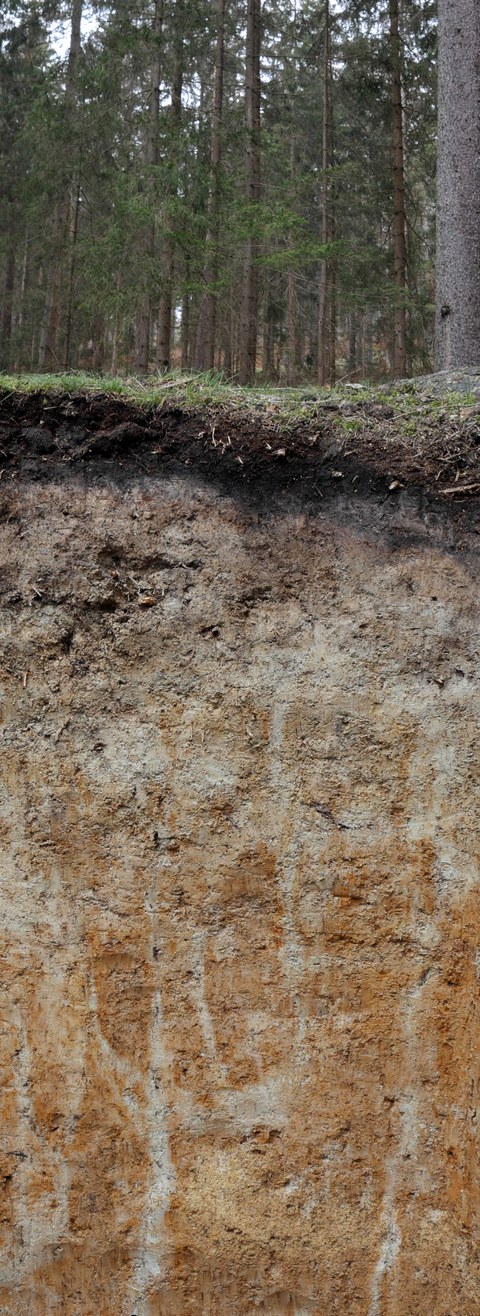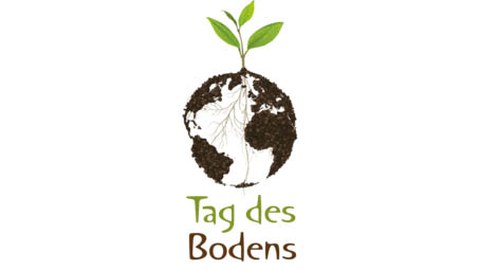Dec 05, 2023
World Soil Day: “2024 Soil of the Year” comes from Tharandt Forest
Soil holds many superlatives: More organisms live in a handful of soil than there are people on Earth, it is a greater store of carbon than vegetation, it has the potential to store large amounts of water, it protects against erosion, and it filters pollutants. Nevertheless, its important role in the environmental system is often overlooked.
For this reason, World Soil Day on December 5 is a valuable opportunity to focus on the diversity and importance of soil as a natural resource. Every year since 2004, the “Soil of the (following) Year” has been chosen to mark the occasion, and this time, forest soil has won the honor. The national jury selected a typical soil from the Tharandt Forest near Dresden as the “2024 Soil of the Year” to represent the diversity of forest soils. Its outstanding structure and value will be honored today in Berlin at a ceremony hosted by the Federal Ministry of Food and Agriculture. As patron, Federal Minister Cem Özdemir will give the welcome address.

Waterlogging in soil "pseudogley" in the Tharandt Forest as the example for the nationwide "2024 Soil of the Year"
The forest soil from Tharandt Forest will be presented as an example at the Berlin event. Because “there isn't really a single type of forest soil,” explains Prof. Karl-Heinz Feger from the Institute of Soil Science and Site Ecology at TU Dresden, who is also President of the German Soil Science Society: “Subsoil in our forests is made up of a wide variety of different soil types.” Which soil has developed at a particular location depends on a combination of different factors – parent material, vegetation, climate and the prevailing water conditions. Human influence also plays a role. Since industrialization, certain soil properties have changed significantly due to the introduction of air pollutants such as acid rain and nitrogen.
“Soil from Tharandt Forest is characterized by periodic waterlogging and has therefore always been unsuitable for farming,” says Prof. Feger. This excess water is caused by accumulating, mostly clayey and highly compacted layers ("horizons”) in the subsoil. A typical characteristic is alternating light and rust-brown patches, known as “marbling.” Experts classify this soil type as pseudogley. It is relatively common in Central European forests and is difficult to cultivate. “Waterlogging leads to a lack of oxygen getting to the roots. This is not well tolerated by some tree species, especially the widely cultivated spruce, which responds to waterlogging with a pronounced ‘shallow-rootedness,’ making them susceptible to windthrow and drought stress. “This may seem paradoxical in waterlogged soil, but in dry periods, which are becoming increasingly frequent due to climate change, the rooted topsoil dries out considerably,” explains Feger. As a result, there are clear correlations to the forest damage of recent years. Pedunculate oak would be ideal in such locations, as would silver fir, at higher altitudes. Unlike spruce, these two native species have deep roots that allow them to utilize compacted and waterlogged soils.
The newly crowned “2024 Soil of the Year” in Tharandt Forest, which is the open-air laboratory of the Forest Sciences at the Faculty of Environmental Sciences of TU Dresden, is part of a soil nature trail created by soil specialists at TU Dresden years ago on behalf of the Saxon State Ministry for the Environment, Agriculture and Geology (LfULG). Several soil pits are easily accessible along a frequently used forest trail, giving the public a glimpse into the otherwise hidden subterranean world of the forest ecosystem. Several information boards display interesting facts to the visitors.
The soil nature trail is also used extensively for the field training in several degree programs at TU Dresden, TU Bergakademie Freiberg, and other universities. Extensive analysis material is available for this purpose, which has also found its way into textbooks. “High-resolution spatial information on land cover conditions, previously available in the form of maps and now available as web-based information systems, is indispensable for sustainable forest management, especially under changing climatic conditions,” explains Prof. Feger. “But complex calculation models, for example for deriving climate change scenarios and planning corresponding adaptation measures, are impossible without soil data. The basis for this remains a precise soil description and targeted sampling in the field.”
Both directly and indirectly, the forest floor contributes significantly to the ecosystem services provided by forests and thus to the achievement of various UN Sustainability Development Goals. It is in fact site diversity that ensures a high level of biodiversity, be it plants, animals, fungi or other microorganisms. Soil is also an important carbon store. Forest soils store significantly more carbon than agricultural soils, due to the continuous formation of humus from the decomposition of foliage. In this way, they help to stabilize the climate. That is especially true of moist soils through to forest mires. Even clean drinking water is provided by the filter and buffer functions of healthy forest soils. At the same time, forests provide effective protection against erosion. Healthy soil contributes significantly to the retention of heavy precipitation and thus to regional flood protection. These ecosystem services can be severely impaired by management errors, such as choosing the wrong tree species or using heavy forestry equipment when soil moisture is critical. On a global scale, large-scale deforestation and increasingly frequent forest fires pose the greatest threat to forest soils.
World Soil Day brings these interrelationships into sharp focus. This year, it marks the start of an intensified public debate on the value, conservation and sustainable use of forest soils.
Contact:
Prof. Karl-Heinz Feger
Institute of Soil Science and Site Ecology (BOKU)
Tel.: +49 351 463-31370
More information
Information on pseudogley in Tharandt Forest as the example for the “2024 Soil of the Year” and the soil nature trail: https://tu-dresden.de/bu/umwelt/forst/boden/das-institut/tharandt-trail and also on the event at the Federal Ministry of Food and Agriculture: https://www.ktmlandingpage.bmel.de/boden-des-jahres-2024
The “2024 Soil of the Year – Forest Soil” campaign is a joint initiative of the Thünen Institute of Forest Ecosystems and the “Soil of the Year” Board of Trustees of the German Soil Science Society (https://www.dbges.de/en), Bundesverband Boden – the Federal Soil Association, (www.bvboden.de) and Ingenieurtechnischer Verband für Altlastenmanagement und Flächenrecycling – Engineering Association for Contaminated Site Management and Land Recycling (www.itv-altlasten.de). Posters and flyers are provided by the Federal Environment Agency.
On an international scale, World Soil Day is promoted by the Food and Agriculture Organization of the United Nations (FAO) https://www.fao.org/world-soil-day/en/ and the International Union of Soil Sciences (IUSS) https://www.iuss.org/meetings-events/world-soil-day/.

